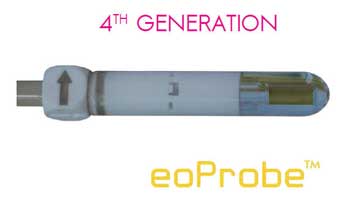|
|
|
|

|

|
| SAR Measurement System |
 |
 |
 |
KAPTEOS SPECIFIC ABSORPTION RATE (SAR) ASSESSMENTSince ultra compact and interference-free electric-field probes allow vector measurement inside biological media, KAPTEOS solution meets specific absorption rate measurement needs for public exposure to electromagnetic fields, especially inside phantoms. |
KAPTEOS SAR - SPECIFIC ABSORPTION RATE ASSESSMENT |
|
SPECIFIC ABSORPTION RATE (SAR) TEST SYSTEM
The exposition of people to electromagnetic fields is an historical concern. Electromagnetic fields are generated by a wide variety of systems and the emitted electrical fields have a broad frequency range (from kHz to GHz). The object of a Specific Absorption Rate Assessment is to perform measurements in accordance with standards requiring in-situ electric field in a biological medium.
An example would be the SAR of a mobile phone
Existing technical E-field measurement solutions There are 2 different technologies available on the market today. • To measure the elevation of temperature inside the phantom in various places. • To measure the electric field based on antenna probes inside the phantom in various places.
Proposed solution by Kapteos The Kapteos eoProbe and eoSense electro-optic solution offers the best possible measurement system due to:
• A non-perturbative
measurement (no metal parts in the eoProbe).
Targeted markets Any manufacturer producing systems that emit electrical fields due to the transport ion of data or energy: • Research. • Medical. • Mobile phones. • Antennas • Communication protocols (Wifi, Bluetooth, RFID) • Wireless energy charging systems. • Induction furnaces • Transport of energy.
Customer advantages of using Kapteos solution • One system that perfectly meets the standards for frequencies from 100kHz to 40GHz. • It allows the measurement of a field vector (amplitude, phase, spectrum, vector direction).
Kapteos references • Several publications with the XLIM research institute (France). • T-bingen Clinic (Germany). • Infantrymen exposure to electric fields from military communication antennas (France).
Specific Absorption Rate Assessment Using Simultaneous Electric Field and Temperature Measurements. Antennas and Wireless Propagation Letters XLIM, Limoges (FR). IMEP-LAHC, Le Bourget-du-Lac (FR). Kapteos, (FR). Boston University, Boston (US). |
SAR TestingSAR testing uses standardized models of the human head and body that are filled with liquids that simulate the RF absorption characteristics of different human tissues. In order to determine compliance, each cell phone is tested while operating at its highest power level in all the frequency bands in which it operates, and in various specific positions against the dummy head and body, to simulate the way different users typically hold a cell phone, including to each side of the head. To test cell phones for SAR compliance, the phone is precisely placed in various common positions next to the head and body, and a robotic probe takes a series of measurements of the electric field at specific pinpoint locations in a very precise, grid-like pattern within the dummy head and torso. All data for each phone placement are submitted as a part of the equipment approval test report for final authorization. However, only the highest SAR values for each frequency band are included in the final authorization to demonstrate compliance with the FCC's RF guidelines. What SAR ShowsThe FCC requires that cell phone manufacturers conduct their SAR testing to include the most severe, worst-case (and highest power) operating conditions for all the frequency bands used in the USA for that cell phone. The SAR values recorded on the FCC's authorization and in the cell phone manual to demonstrate compliance with Commission rules indicate only the highest single measurement taken for each frequency range that the particular model uses. FCC approval means that the device will never exceed the maximum levels of consumer RF exposure permitted by federal guidelines, but it does not indicate the amount of RF exposure consumers experience during normal use of the device. While only the maximum SAR values are used for FCC approval, all test reports submitted by the manufacturer are available in full for public inspection on the Commission's website. |
|
Copyright © 2001- R. A. Mayes Company, Inc. An Electro Mechanical Research and Development (EMRAD) Corporation, Company See our Privacy Policy All the data files on our website require Adobe Acrobat Reader! |